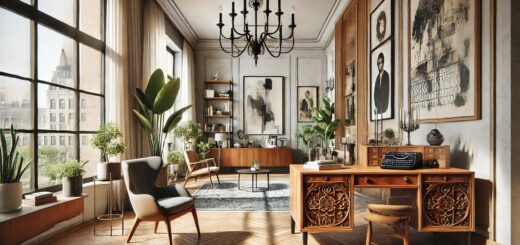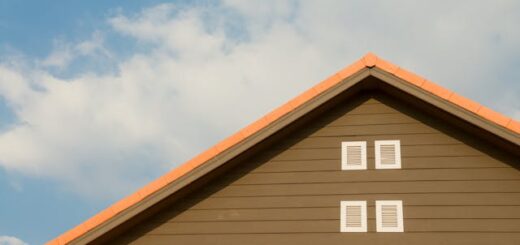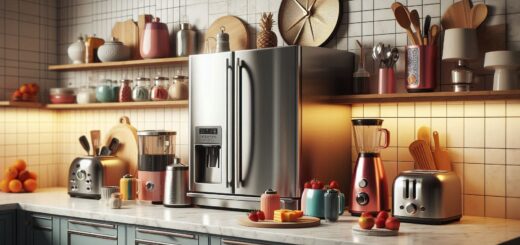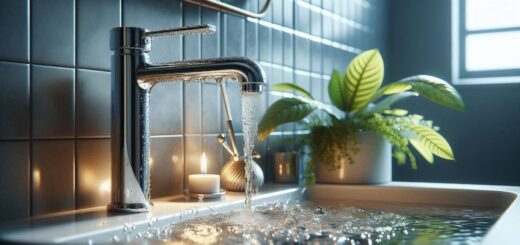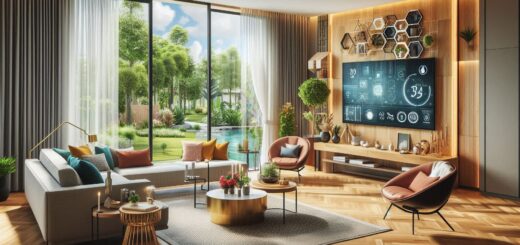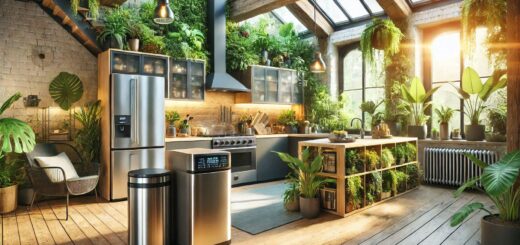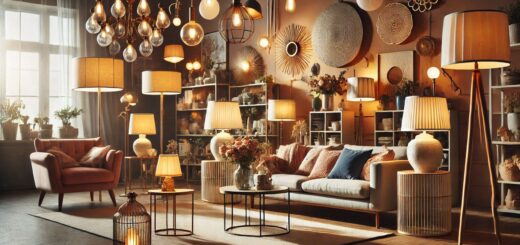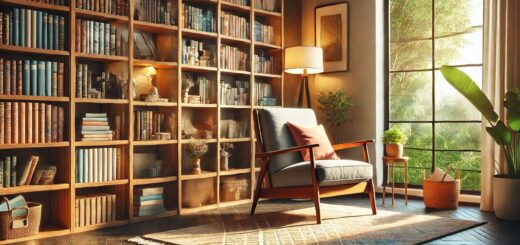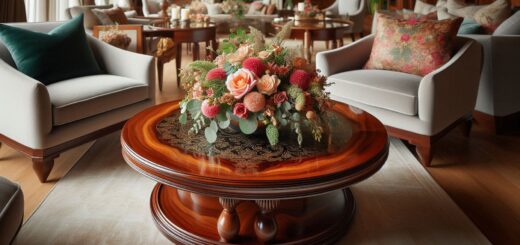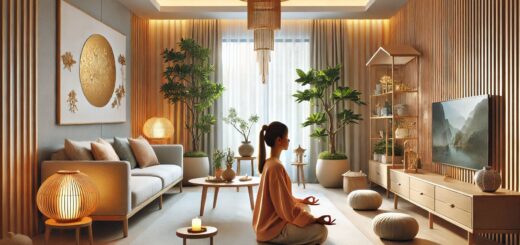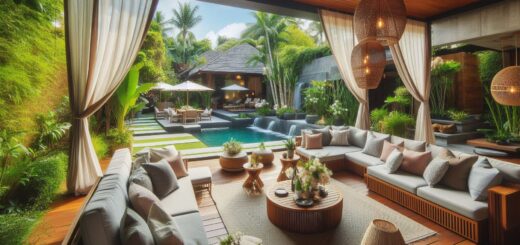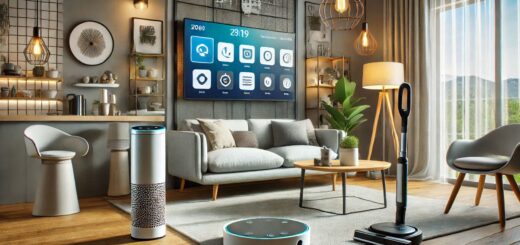Top 10 Benefits of Passive House Design for Your Home
The Passive House Design standard is transforming how we approach home building and renovation, offering a sustainable and energy-efficient solution for modern living. Combining cutting-edge technology with environmentally friendly principles, Passive House Design is a choice that not only benefits the homeowner but also contributes to the global sustainability movement. Here, we’ll explore the top 10 benefits of adopting Passive House Design for your home.
Table of Contents
What is Passive House Design?
Passive House Design is an architectural standard that aims to create buildings with ultra-low energy consumption while maintaining optimal indoor comfort. Developed in Germany in the late 1980s, it has become an internationally recognized model for sustainable and energy-efficient construction. The key principle behind Passive House Design is to drastically reduce the need for conventional heating and cooling systems, relying on superior insulation, airtight construction, and high-performance windows.
The design integrates advanced ventilation systems that ensure a constant supply of fresh air while recovering heat. This minimizes energy waste and creates a healthy, comfortable living environment year-round, offering significant environmental and financial benefits for homeowners.
Top 10 Benefits of Passive House Design
Passive House Design offers a revolutionary approach to building homes that are energy-efficient, eco-friendly, and comfortable. By focusing on superior insulation, airtight construction, and sustainable materials, Passive Houses provide significant savings, improved indoor air quality, consistent thermal comfort, and a healthier living environment. These benefits make Passive Houses a top choice for modern, sustainable living.
1. Unmatched Energy Efficiency in Passive House Design
One of the most compelling advantages of Passive House Design is its unparalleled energy efficiency. By employing thick insulation, airtight seals, and high-performance windows, Passive Houses reduce energy consumption by up to 90% compared to traditional homes. This substantial energy reduction is achieved by focusing on both minimizing heat loss in winter and preventing heat gain in summer, creating a stable indoor environment year-round.
Additionally, Passive Houses utilize energy-efficient appliances and renewable energy systems, further decreasing reliance on external energy sources. This combination of design elements ensures lower utility bills and a significant reduction in a home’s carbon footprint, contributing to global sustainability efforts.
Key Features:
- Superior Insulation: High-quality insulation keeps the home warm in winter and cool in summer by minimizing heat transfer.
- Airtight Construction: A tightly sealed structure prevents energy loss through gaps, cracks, or leaks, maintaining a consistent indoor climate.
- High-Performance Windows: Triple-glazed windows provide exceptional thermal insulation, reducing heat loss and improving energy efficiency.
- Ventilation with Heat Recovery: Continuously circulates fresh air while capturing and reusing heat, ensuring optimal indoor air quality and energy conservation.
These features make Passive House Design an excellent choice for reducing dependence on fossil fuels and achieving significant energy savings.
2. Significant Cost Savings with Passive House Design
While the initial investment in Passive House Design may be higher than traditional construction, the long-term savings are undeniable. Over time, the efficiency of these homes leads to substantial financial benefits, making them a sound financial choice for homeowners.
In addition to lower energy bills and reduced maintenance costs, Passive House Design helps homeowners future-proof their properties against rising energy prices. As energy costs continue to increase, the savings from energy efficiency will only grow, further enhancing the long-term value of the home. This financial stability, coupled with government incentives, makes Passive Houses a wise investment that pays off in both savings and comfort over the years.
Financial Benefits:
- Lower Energy Bills: Homeowners often save up to $2,000 annually on heating, cooling, and electricity costs due to the energy-efficient nature of Passive Houses, significantly reducing utility expenses.
- Reduced HVAC Maintenance: With fewer mechanical components and systems, the need for expensive repairs or replacements decreases, resulting in lower long-term maintenance costs.
- Government Incentives: Many countries offer tax breaks, grants, and subsidies for building energy-efficient homes, which can help offset the higher upfront costs and make the investment more accessible.
Passive Houses are not only environmentally sustainable but also offer a financially prudent solution, providing savings that accumulate over the years.
3. Improved Indoor Air Quality and Health Benefits
Passive Houses prioritize the health of occupants by maintaining superior indoor air quality. Through advanced ventilation systems, these homes continuously circulate fresh air while filtering out pollutants, allergens, and dust, ensuring a clean and healthy living environment.
The controlled ventilation system works efficiently to remove excess moisture, carbon dioxide, and indoor air pollutants, preventing the buildup of harmful substances. Unlike traditional homes that may rely on opening windows for ventilation, Passive Houses ensure that air quality is constantly monitored and maintained, even in the absence of outdoor airflow. This approach provides a comfortable living space with fresh air year-round, benefiting everyone, especially those with respiratory issues or sensitivities.
Clean air and optimal indoor conditions promote overall well-being, making Passive Houses an excellent choice for a healthier and more comfortable living space.
Benefits:
- Reduced Allergens: High-performance filtration systems effectively remove pollen, dust, and other irritants, which is particularly beneficial for individuals with allergies or asthma.
- Stable Humidity Levels: These homes maintain consistent humidity, which helps prevent mold, mildew, and dampness from forming, ensuring a healthier atmosphere.
- Healthier Living: By reducing indoor pollutants and maintaining optimal conditions, Passive Houses support respiratory health, creating a safer environment for families, especially those with existing health concerns.
Clean air and optimal indoor conditions promote overall well-being, making Passive Houses an excellent choice for a healthier and more comfortable living space.
4. Exceptional Thermal Comfort Year-Round
Whether it’s a scorching summer or a freezing winter, Passive Houses maintain a consistent indoor temperature, eliminating the discomfort of seasonal extremes. With advanced design features, these homes offer year-round comfort, making them ideal for maintaining a pleasant living environment in any climate.
The design of a Passive House minimizes the need for external heating and cooling systems by using highly efficient insulation, high-performance windows, and airtight construction. As a result, homeowners can enjoy a stable, comfortable indoor climate without relying heavily on energy-intensive HVAC systems. This approach not only reduces energy costs but also ensures a consistently comfortable environment, no matter the weather outside.
Features:
- High-Performance Windows: Triple-glazed windows prevent heat loss in winter while minimizing heat gain in summer, contributing to a balanced indoor temperature.
- Airtight Construction: Tightly sealed construction eliminates drafts, cold spots, and heat leaks, ensuring uniform warmth in winter and cooling in summer.
- Year-Round Comfort: The home’s efficient insulation and ventilation systems allow residents to enjoy stable indoor temperatures without the need for constant thermostat adjustments or reliance on expensive heating and cooling systems.
This high level of thermal comfort is one of the main reasons homeowners are increasingly turning to Passive House Design, as it enhances overall comfort while reducing energy consumption.
5. Eco-Friendly Construction for a Sustainable Future
Sustainability is at the core of Passive House Design. By incorporating renewable materials and reducing energy consumption, these homes have a significantly lower carbon footprint. They are designed to have a minimal environmental impact, making them a responsible choice for eco-conscious homeowners.
In addition to reducing operational energy use, Passive Houses are built with durability in mind. The materials used are not only energy-efficient but also long-lasting, reducing the need for frequent replacements and minimizing waste. This focus on sustainable construction helps ensure that the home remains environmentally friendly throughout its lifespan, further enhancing its contribution to global sustainability goals.
Eco-Friendly Features:
- Use of Recycled Materials: Many Passive Houses integrate sustainable construction materials, such as recycled steel, wood, and insulation, helping reduce waste and the need for new resources.
- Reduced Energy Demand: By employing advanced insulation and airtight construction, Passive Houses can reduce energy demand, cutting greenhouse gas emissions by up to 90% compared to conventional homes.
- Contribution to Sustainability Goals: The reduced energy consumption and lower carbon footprint of Passive Houses contribute to global sustainability efforts, helping meet international climate targets.
Building a Passive House is a step toward a greener future, supporting not only the homeowner’s long-term savings but also the broader effort to reduce environmental impact and combat climate change.
6. Reduced Noise Pollution for a Peaceful Living Environment
A Passive House provides an oasis of calm, thanks to its superior soundproofing. Thick walls, triple-pane windows, and airtight seals work together to block external noise, creating a serene and peaceful indoor environment.
This exceptional sound insulation not only protects against outdoor noise but also minimizes disturbances between rooms, making it ideal for families, remote workers, or anyone who values a quiet, undisturbed space. Whether it’s the noise of city traffic, neighborhood chatter, or nearby construction, Passive Houses create an environment where comfort and tranquility are preserved, enhancing quality of life and well-being.
Advantages:
- Peaceful Living Spaces: Ideal for urban settings or noisy neighborhoods, where outside noise can be a constant disruption. Passive Houses offer a quiet retreat from the hustle and bustle of daily life.
- Enhanced Privacy: The exceptional soundproofing prevents sound from traveling between rooms, keeping conversations private and reducing disturbances.
- Stress Reduction: A quieter environment contributes to mental well-being, helping reduce stress and improve overall health by creating a tranquil space for relaxation and focus.
With its excellent acoustic performance, a Passive House is perfect for those seeking tranquility, making it an ideal choice for anyone looking to escape noise pollution.
7. Durability and Longevity for Long-Term Investment
Passive Houses are built to last. Using high-quality materials and advanced construction techniques, they are designed for long-term durability with minimal maintenance requirements, making them a smart investment for homeowners seeking a lasting and low-maintenance living solution.
The combination of airtight construction, resilient materials, and energy-efficient systems ensures that a Passive House remains in excellent condition over time. Its ability to resist environmental stressors, such as temperature fluctuations and moisture buildup, means fewer repairs are needed, and the home maintains its energy efficiency for decades. This longevity not only enhances the homeowner’s quality of life but also preserves the property’s value, making it a wise financial investment.
Durability Features:
- Resilient Materials: The use of high-performance materials ensures the home is structurally sound and resistant to wear, extending its lifespan and maintaining its performance for years.
- Minimal Wear and Tear: Airtight construction and superior insulation protect the building from the damaging effects of extreme weather conditions, such as wind, rain, or snow, keeping the structure in top condition.
- Lower Maintenance Costs: With fewer mechanical systems and robust construction, Passive Houses require less upkeep, reducing the need for frequent repairs and lowering long-term maintenance costs.
A Passive House is a sound investment in a home that stands the test of time, offering durability and long-term value for homeowners.
8. Design Flexibility for Personalized and Sustainable Living
Contrary to popular belief, Passive Houses can be customized to suit various architectural styles and climates, offering homeowners the flexibility to create a home that aligns with their personal preferences and local environmental conditions.
Moreover, Passive House principles can be integrated into both contemporary and traditional architectural styles, ensuring that energy efficiency doesn’t come at the expense of design. Whether homeowners are looking for a modern, minimalist aesthetic or a more classic, rustic feel, Passive Houses can adapt to meet these needs while maintaining their high-performance energy standards. This makes Passive House design a versatile choice for any homeowner, regardless of their style preferences.
Flexible Options:
- Adaptable to Local Weather: Passive House designs can be tailored for specific climates, whether it’s built to endure extreme heat, harsh winters, or temperate conditions, ensuring optimal performance in any environment.
- Aesthetic Freedom: Modern Passive Houses blend sustainability with cutting-edge design, allowing for sleek, contemporary aesthetics without compromising on energy efficiency.
- Personalization: Homeowners can customize floor plans, finishes, and layouts to suit their unique style, from open-concept living spaces to eco-friendly finishes that reflect personal taste.
By combining functionality with aesthetic appeal, Passive Houses provide versatility for homeowners, offering both practical benefits and the ability to craft a space that feels truly their own.
9. Increased Property Value and Financial Gains
Sustainability and energy efficiency are highly desirable traits in the housing market today. As a result, Passive Houses often command higher resale values, making them a wise investment for homeowners seeking long-term financial benefits.
The increasing demand for energy-efficient homes means that Passive Houses are positioned well for future market trends, as more buyers prioritize eco-friendly, cost-effective living options. As green building standards become the norm, owning a Passive House can provide a competitive edge when selling a property. This trend not only boosts property value but also ensures that owners enjoy a higher return on investment.
Value Drivers:
- Eco-Conscious Buyers: Passive Houses appeal to a growing demographic of environmentally aware purchasers who value energy efficiency and sustainability in their homes.
- Premium Pricing: Buyers are willing to pay a premium for homes that offer long-term energy savings, lower utility bills, and reduced environmental impact, making these homes a lucrative investment.
- Market Trends: The demand for green, energy-efficient buildings is steadily rising, with more people recognizing the long-term value and cost savings of sustainable living.
Investing in a Passive House is not only good for the planet but also a smart financial decision, as it increases property value and aligns with future market trends.
10. Health Benefits for a Better Quality of Life
The health advantages of Passive Houses go beyond clean air. By eliminating moisture, pollutants, and temperature fluctuations, these homes promote overall wellness, ensuring a healthier living environment for all occupants.
In addition to improving respiratory health, the stable indoor conditions of a Passive House can also contribute to enhanced mental well-being. The quiet, comfortable environment reduces stress, while the clean, fresh air promotes better focus and energy levels. These factors combine to create a holistic living experience that supports both physical health and emotional well-being, making Passive Houses an ideal choice for families looking to improve their overall quality of life.
Health Improvements:
- Prevention of Mold: Airtight construction and stable humidity levels prevent dampness, reducing the risk of mold growth, which can cause respiratory issues and allergies.
- Better Sleep: The noise reduction, coupled with stable indoor temperatures, creates a peaceful environment that enhances sleep quality and promotes better rest.
- Fewer Illnesses: Clean air circulation systems reduce the spread of airborne illnesses, making Passive Houses a healthier environment, especially for individuals with respiratory conditions or allergies.
For families and individuals alike, the health benefits of a Passive House make it a valuable choice, supporting both physical and mental well-being.
FAQs About Passive House Design
1. Is Passive House Design expensive?
While initial construction costs for Passive House Design can be higher compared to traditional homes, the long-term savings make it a highly cost-effective choice. Reduced energy consumption, lower utility bills, and minimal maintenance costs quickly offset the initial investment. Over time, homeowners can save thousands of dollars annually, making it a smart financial decision.
2. Can Passive Houses be built in any climate?
Yes, Passive Houses can be built in any climate, whether hot or cold. The design is adaptable, with solutions tailored to each region’s specific weather conditions. In colder climates, extra insulation and airtight construction ensure warmth, while in warmer climates, advanced shading and natural ventilation strategies keep the house cool, maximizing energy efficiency year-round.
3. Do Passive Houses require special maintenance?
No, Passive Houses require minimal maintenance. Their airtight construction, durable materials, and efficient systems make them incredibly low-maintenance. The ventilation system filters pollutants, ensuring air quality is always fresh, while high-performance windows and insulation protect against weather-related damage. This significantly reduces the need for frequent repairs, saving time and money in the long run.
4. Are Passive Houses suitable for large families?
Absolutely! Passive Houses are versatile and can be designed to accommodate any household size, from small families to large ones. The flexible design allows for spacious interiors, custom layouts, and multiple rooms, all while maintaining energy efficiency and comfort. The ability to adapt the design to individual needs makes it an ideal choice for families of all sizes.
5. What is the payback period for a Passive House?
The payback period for a Passive House typically ranges from 5 to 10 years, depending on factors such as energy savings, local climate, and available government incentives. Although the upfront costs may be higher, the significant reduction in energy bills and long-term savings make the investment worthwhile. Over time, homeowners will experience financial benefits that far outweigh the initial expense.
6. Can existing homes be retrofitted to meet Passive House standards?
Yes, many existing homes can be retrofitted to meet Passive House standards. This involves upgrading insulation, sealing gaps to prevent air leaks, installing high-performance windows, and improving ventilation systems. Retrofitting can be a more affordable option compared to building a new Passive House, while still achieving significant energy savings, improved comfort, and reduced environmental impact.
Conclusion
The top 10 benefits of Passive House Design demonstrate its value as an eco-friendly, cost-effective, and health-conscious choice for homeowners. From energy efficiency to enhanced indoor comfort, Passive Houses represent the future of sustainable living. By choosing this innovative design, you contribute to a greener planet while enjoying long-term financial and personal benefits.


